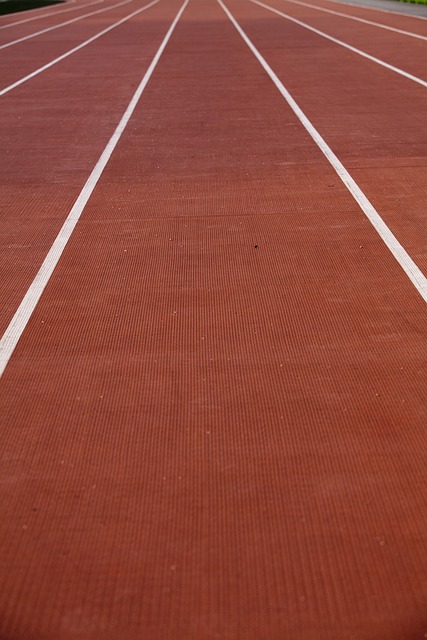Ducks runners require a multifaceted training approach to excel in cross-country. This includes a balanced mix of interval workouts, tempo runs, and long-distance sessions for aerobic capacity development. Off-track exercises target flexibility, core stability, and balance to minimize injury risk. Off-season training focuses on endurance and strength development through varied activities like cycling and hill sprints. Strategic race preparation involves visualization, pace planning, and controlled starts. Effective recovery methods, including active recovery and balanced nutrition, are crucial for maximizing Ducks runners' potential and performance.
Ducks cross country athletes require a tailored training regimen to excel. Understanding the unique needs of these runners involves recognizing their adaptability and resilience. Off-season training should focus on building a strong foundation, enhancing aerobic capacity for endurance, and incorporating strength and agility drills for peak performance. Key strategies include race strategy planning and effective recovery techniques. By combining these elements, Ducks runners can achieve optimal results in competitive cross country events.
- Understanding the Unique Needs of Ducks Runners
- Building a Strong Foundation: Off-Season Training
- Aerobic Development: Enhancing Endurance
- Strength and Agility Drills for Optimal Performance
- Race Strategy and Recovery Techniques for Cross Country Success
Understanding the Unique Needs of Ducks Runners

Ducks runners, like all athletes, have specific physical and mental requirements that must be addressed in their training regimen. Cross-country running presents unique challenges due to the varied terrain and endurance demands. Therefore, a tailored approach is essential for optimal performance. These runners need to build both cardiovascular strength and muscular endurance, ensuring they can sustain speed and stamina throughout lengthy races.
Incorporating diverse training methods, such as interval workouts, tempo runs, and long-distance sessions, helps Ducks runners enhance their aerobic capacity and leg strength. Additionally, off-the-track exercises focusing on flexibility, core stability, and balance contribute to injury prevention and overall efficiency. Understanding the individual needs of these athletes, including proper rest and recovery periods, is key to crafting an effective training program that maximizes their potential.
Building a Strong Foundation: Off-Season Training

Building a solid foundation is key for Ducks runners aiming to excel in cross-country. Off-season training plays a pivotal role in preparing these athletes for the rigors of the upcoming season. During this period, focusing on endurance and strength development is essential. Runners should incorporate a mix of long-distance runs, interval workouts, and hill sprints into their routines. These exercises enhance aerobic capacity, improve running efficiency, and build mental resilience.
Additionally, incorporating cross-training activities like cycling, swimming, or strength training can prevent injuries and promote overall fitness. Ducks runners should also prioritize flexibility and mobility work to support their bodies throughout the competitive season. This foundational training period is crucial for setting personal records and achieving success on the cross-country circuit.
Aerobic Development: Enhancing Endurance

Ducks runners, like any cross-country athlete, require a robust aerobic development training regimen to enhance their endurance. This involves incorporating sustained periods of moderate-intensity running to build the runners’ capacity for oxygen utilization and energy production systems. By gradually increasing the duration and distance of these runs, Ducks athletes can improve their overall stamina, allowing them to perform better during longer races.
Training sessions should include interval workouts that alternate between faster paces and recovery periods. This variety helps improve both aerobic and anaerobic fitness, ensuring Ducks runners are prepared for a range of race scenarios. Incorporating hill repeats is another effective strategy as it strengthens muscles while enhancing cardiovascular efficiency, making each stride more efficient over extended distances.
Strength and Agility Drills for Optimal Performance

Strength and agility drills are integral components of a well-rounded training regimen for Ducks cross country athletes, aiming to enhance both speed and endurance. These exercises focus on developing muscular strength and improving coordination, balance, and reaction time—all crucial factors in elevating performance levels during races.
For Ducks runners, specific drills might include plyometric exercises like box jumps and lateral shuttle runs to boost explosive power and agility. Resistance band workouts can also target various muscle groups, improving overall body control and stability. Incorporating these drills into training sessions helps athletes overcome physical barriers, refine their technique, and ultimately achieve optimal performance on the cross country course.
Race Strategy and Recovery Techniques for Cross Country Success

Successful cross country racing requires a well-thought-out strategy and efficient recovery techniques for Ducks runners to excel. Before the race, athletes should aim to visualize their ideal performance, knowing their pace and positioning at various points. On race day, starting with a controlled pace early on is crucial, allowing runners to conserve energy for the latter half. This tactic enables them to maintain a steady rhythm, avoiding excessive speeding that could lead to premature fatigue.
Post-race, proper recovery is vital. Ducks runners should incorporate active recovery sessions like light jogging or swimming to promote blood flow and reduce muscle stiffness. Additionally, adequate hydration, balanced nutrition, and sufficient rest days are essential for optimal physical restoration. These strategies collectively contribute to improved performance, ensuring Ducks runners are prepared for the mental and physical demands of each cross country competition.






